Jungle Love
Fly-fishing in the Jungle is an Addicting Adventure
By Ryan Sparks, Associate Editor
Most people learn to fly-fish by targeting trout in a small river or largemouth bass in a backyard pond. From there they might seek out the large freestone rivers of the Western U.S. or head to warm saltwater flats in places like Mexico, the Florida Keys or Belize.
Adventurous fly anglers eventually realize that almost any fish can be caught with fly-fishing tackle and begin exploring the remotest corners of the planet with a fly rod in hand. For those seeking a new fly-fishing adventure, a trip to the jungles of South America offers exotic fish species, incredible wildlife and memories to last a lifetime.
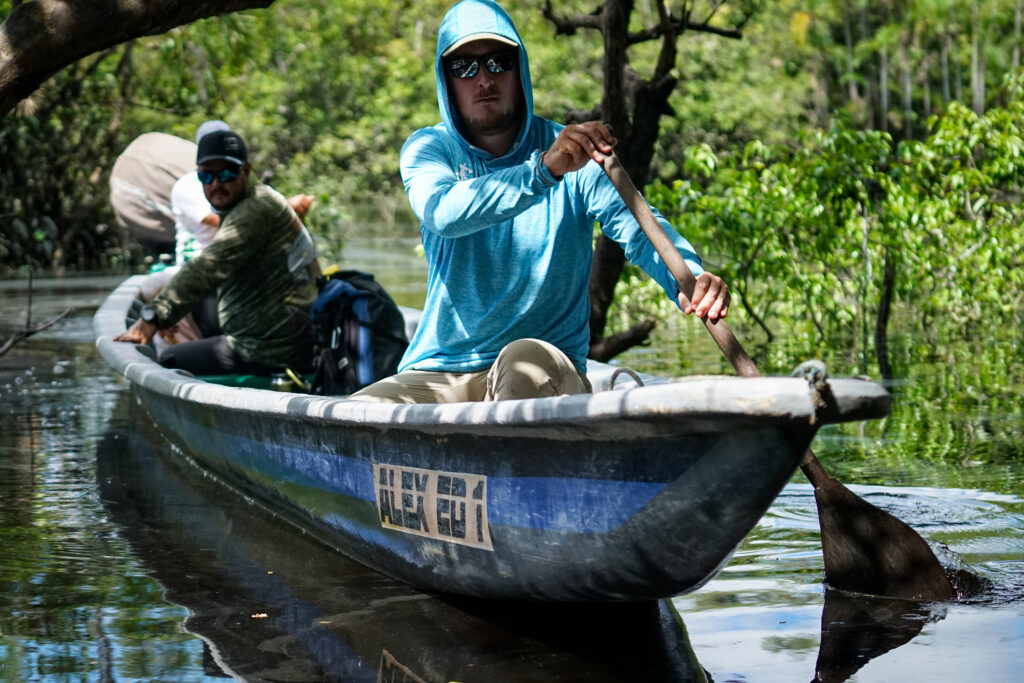
One angler who has as much jungle fly-fishing experience as almost anyone on the planet is Javier Guevara of Ecuador Fly Fishing Tours. Guevara has been fly-fishing the jungles of Central and South America for more than 10 years, catching a laundry list of species including huge arapaima, peacock bass, golden dorado, colorful arowana, toothy payara and silver-bullet tarpon, just to name a few.
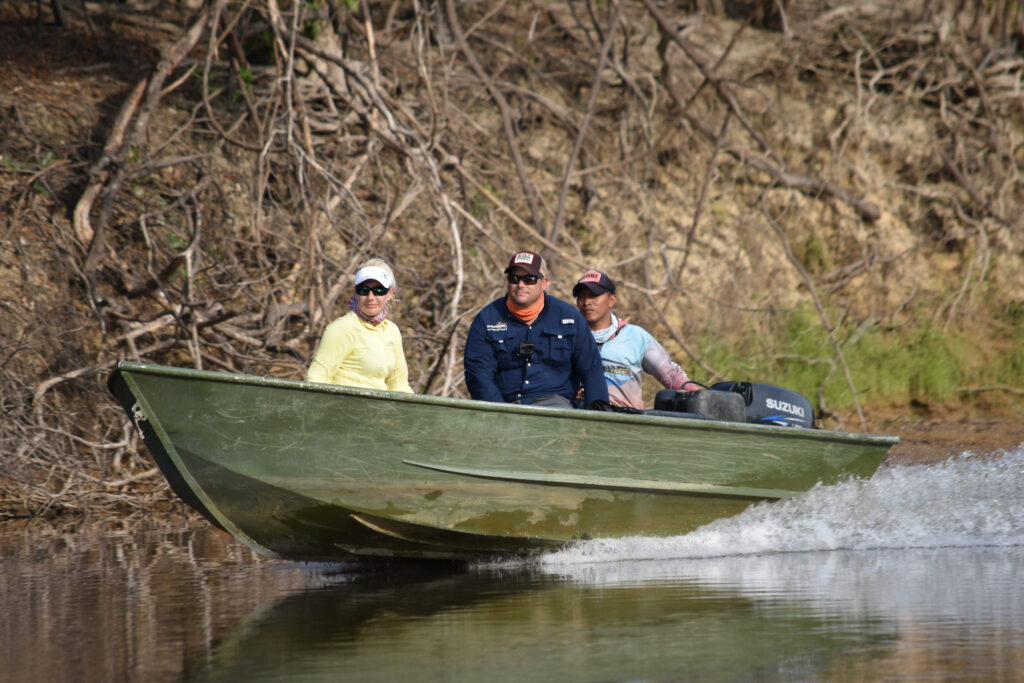
For first-time anglers headed to the jungle, Guevara recommends selecting a location that offers an abundance of opportunity.
“If you want to get a little adventurous, Colombia is a true jungle experience with very good numbers of peacock bass that get really big,” he said. “It is also a location where we catch payara (vampire fish), bicuda and pacu. There are also many other species there. You never know what you might catch in the jungle.”
The number of peacock bass species in the world is debated, but anglers generally concentrate on the main five: tucunaré, popoca, borboleta, lakanini and royal peacock. These super aggressive and hard fighting fish are found throughout the Amazon and Orinoco Basins. Peacocks are attracted to splashing and other disturbances in the water, so topwater flies and large streamers are very effective.
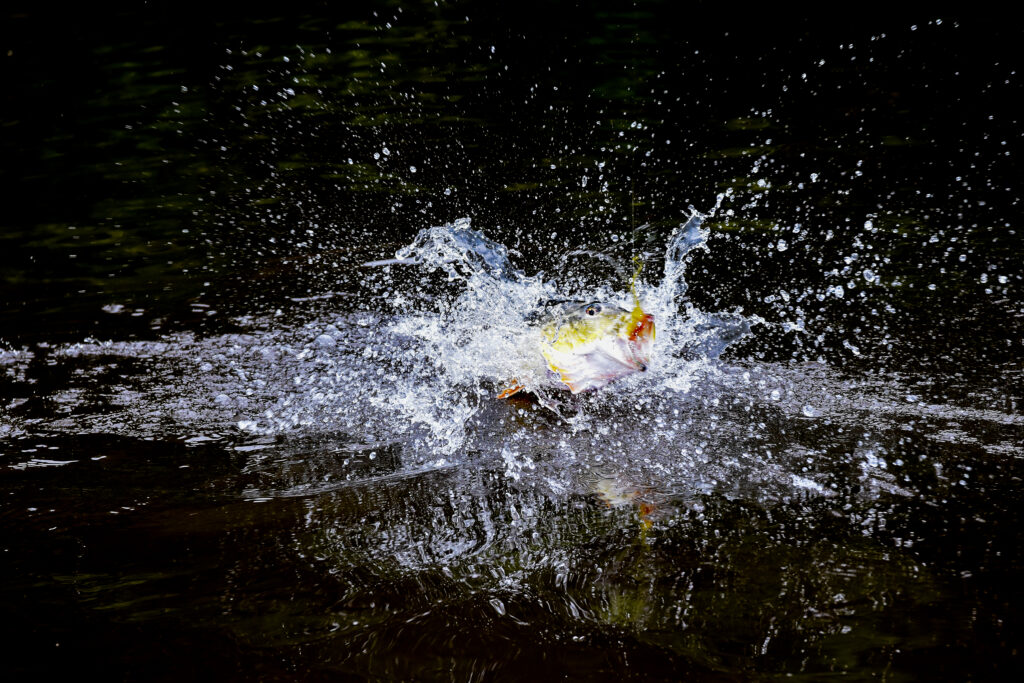
“Peacocks are very fun fish to catch,” said Guevara. “We often have two anglers hooked up at once. You also don’t have to be the best caster in the world to catch them, so they are perfect for someone new to the jungle.”
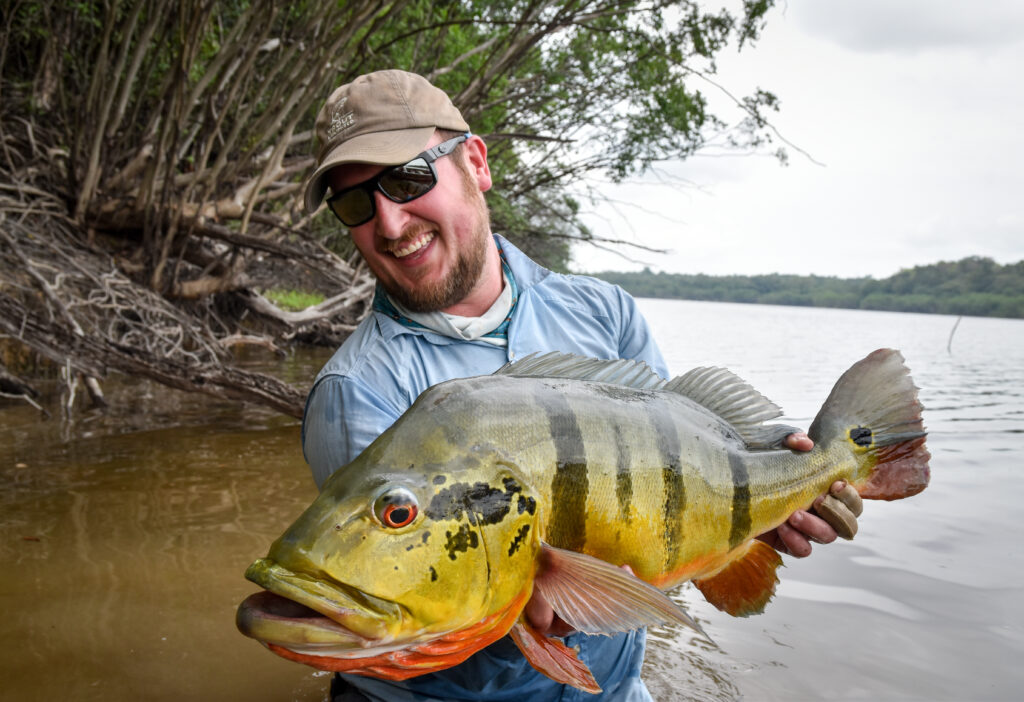
Payara, sometimes called vampire fish, are a predatory species also found in the Amazon and Orinoco Basins. Payara get their nickname from the two long fangs that protrude from their lower jaw that they use to impale their prey. Payara are strong swimmers and are drawn to fast current where they ambush smaller baitfish.
“Payara are much easier to hook than they are to land,” said Guevara laughing. They are unique in that most jungle fish do not sit in fast moving water. Payara are very powerful from living in the current, and they know how to use it to their advantage when they are hooked.
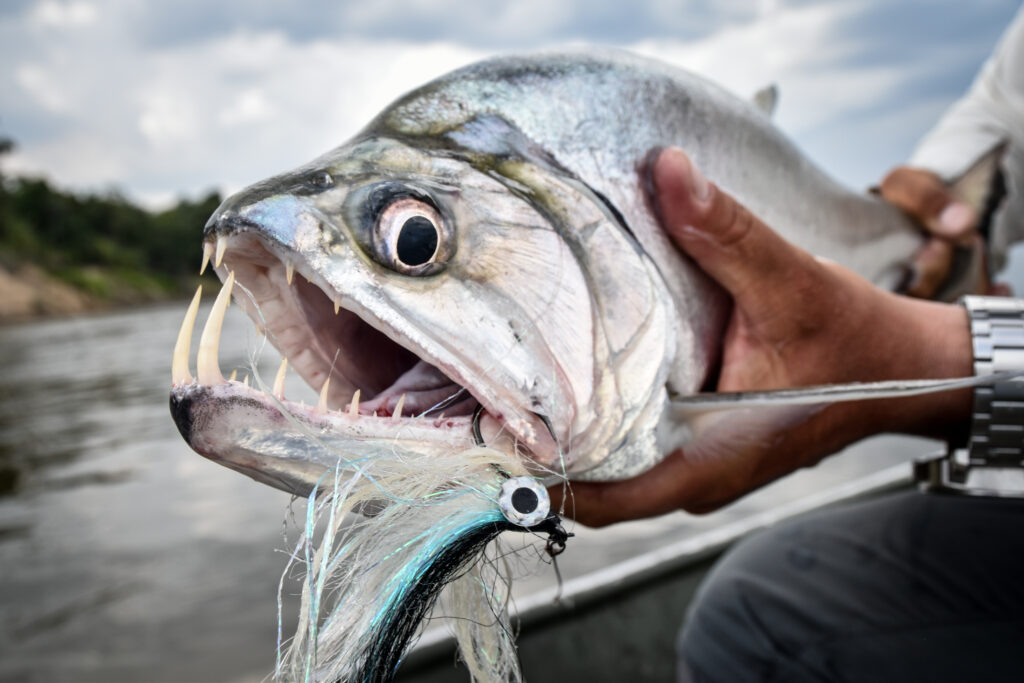
“It takes a lot of skill to land one,” Guevara continued. “Their strength and the fact that they jump makes them one of my favorite jungle fish.”
While payara are one of Guevara’s favorite jungle species, his absolute favorite are arapaima. Arapaima are one of the world’s largest freshwater fish. The largest specimens can grow to 15 feet and reach weights of over 400 pounds.
Largely unchanged from their prehistoric ancestors, arapaima are swimming fossils and the apex predator of their freshwater ecosystems. The remote jungle environments where they live, the difficulty of tricking them into eating a fly and their overwhelming strength makes them one of the most uniquely awe-inspiring fish in the world. Arapaima exist in isolated pockets of the Amazon in countries like Guyana, Brazil and Ecuador. Catching one on a fly rod is one of the sport’s crowning achievements.
“Just thinking about arapaima makes my legs shake,” Guevara said. “They are the most powerful fish I’ve ever encountered. The adrenaline you feel when you see one is unmatched.”
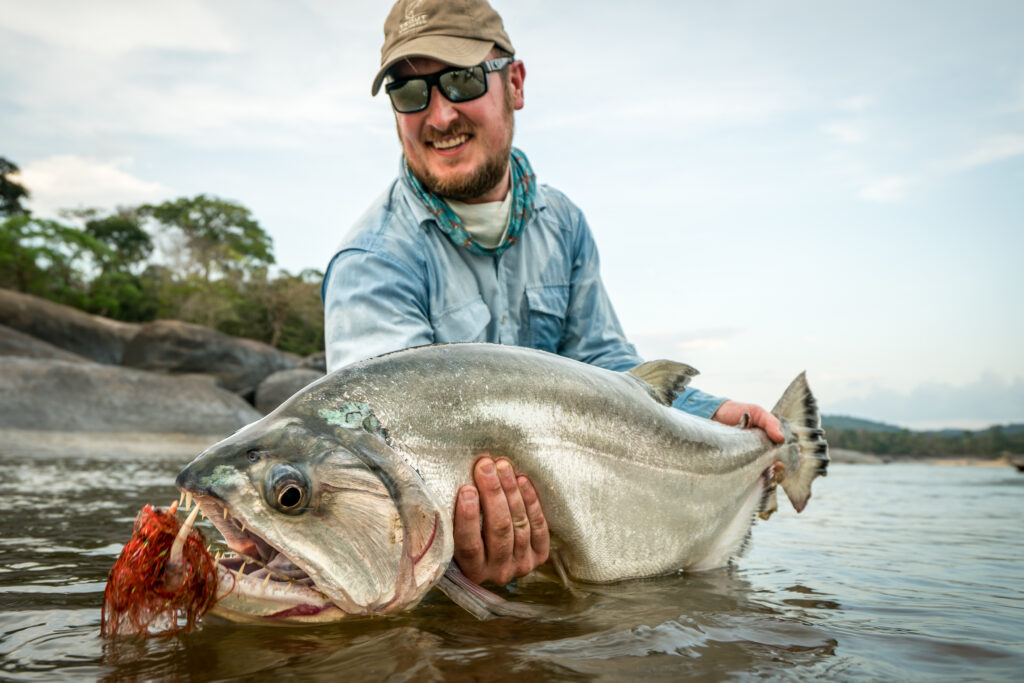
Fly-fishing for arapaima is much like hunting. Arapaima surface for oxygen and often follow the same path as they cruise through a lagoon, stopping to surface in roughly the same locations. Fish are spotted from afar and the canoe is quietly maneuvered towards the fish. Once in position, it becomes a waiting game.
You speak in whispers and watch the water with intensity and anticipation. If a fish surfaces within casting distance, a quick and accurate cast is needed to put the fly directly in their path. If all goes well, the water explodes, and pandemonium breaks loose.
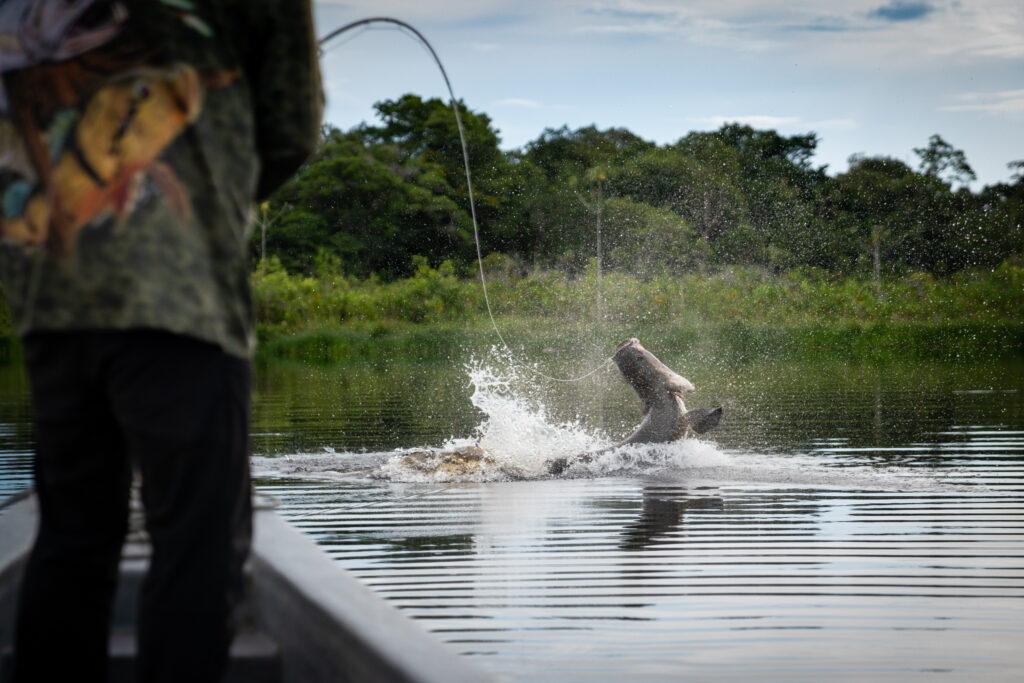
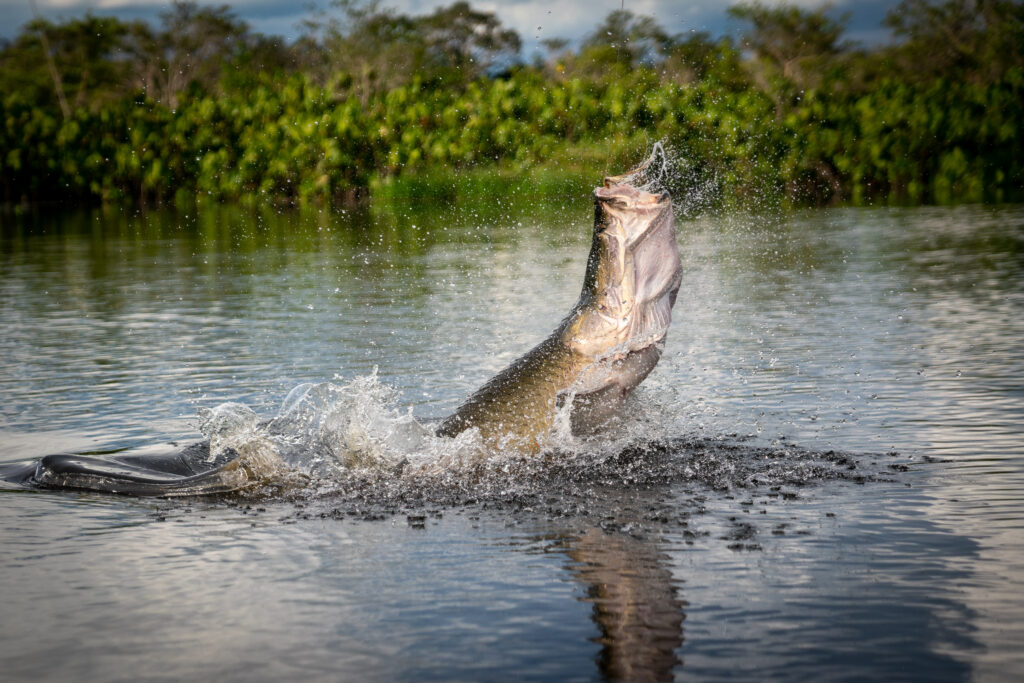
With such a variety of fish species to target in the jungle, selecting equipment is often a tough balance between being prepared and keeping baggage to a minimum. Guevara recommends 8- to 10-weight fly rods for most situations (arapaima excepted) because of their versatility. For reels, he recommends anything with a large arbor and a good drag system.
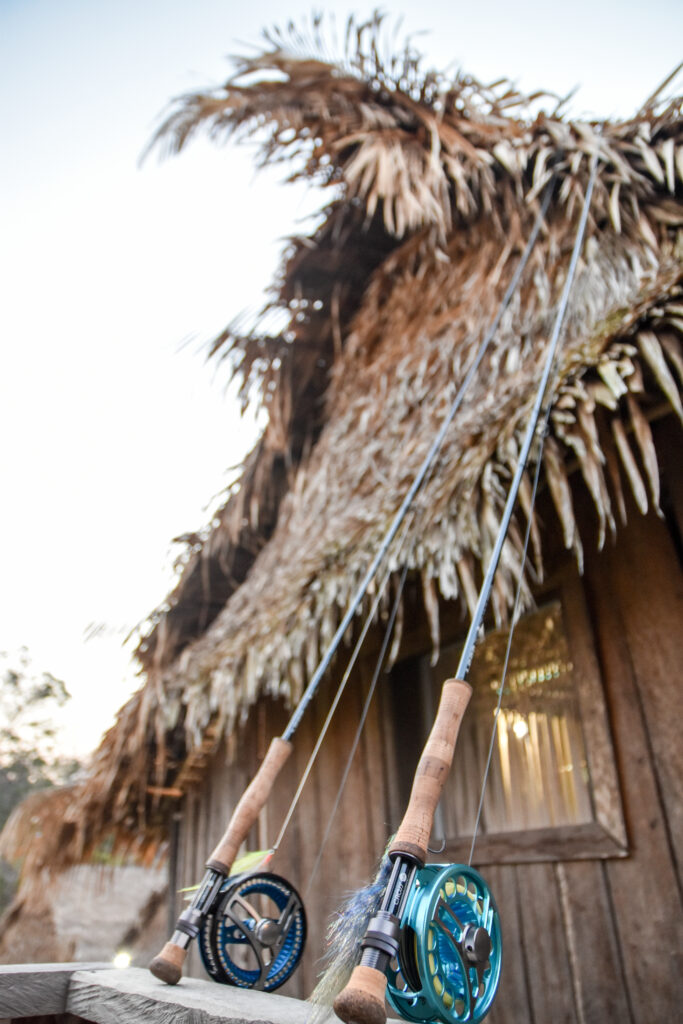
Guevara also recommends bringing spare fly lines and flies tied on strong hooks.
“The jungle is tough on fly lines,” he said.
Fish wrap lines around logs or fray them with their teeth all the time. You need to keep gear to a minimum in the jungle, and this applies to clothing as well. A couple pairs of lightweight, quick-dry pants and shirts, a quality rain jacket, polarized sunglasses, a sun hat and a pair of quick drying boat shoes are all that is needed.
Guevara recommends a waterproof backpack for fishing as well as a waterproof duffel for clothes and other gear. In the jungle there are no roads and travel is mostly done along rivers, so your gear will eventually get soaked if not well protected.
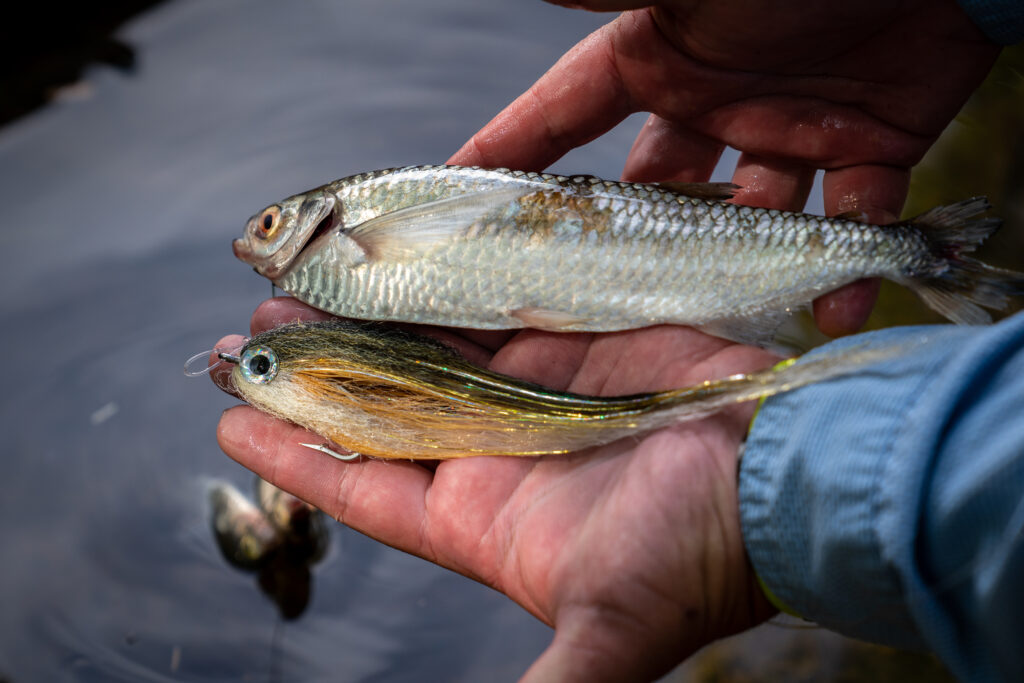
The No. 1 one piece of advice is to communicate with your outfitter. They will let you know the appropriate rod and reel sizes, what flies to bring and what to expect on the trip. That communication should continue with your guide. They are often locals who intimately know the waters they fish. Check your ego at the door and keep an open mind.
With more fly anglers interested in catching jungle species, trip options have never been more readily available. Depending on what you want to catch and how adventurous you want to get, countries like Bolivia, Brazil, Colombia, Ecuador, Guyana and Mexico are all excellent options. Keep in mind that trips of this nature often fill up over a year in advance, especially during peak season.
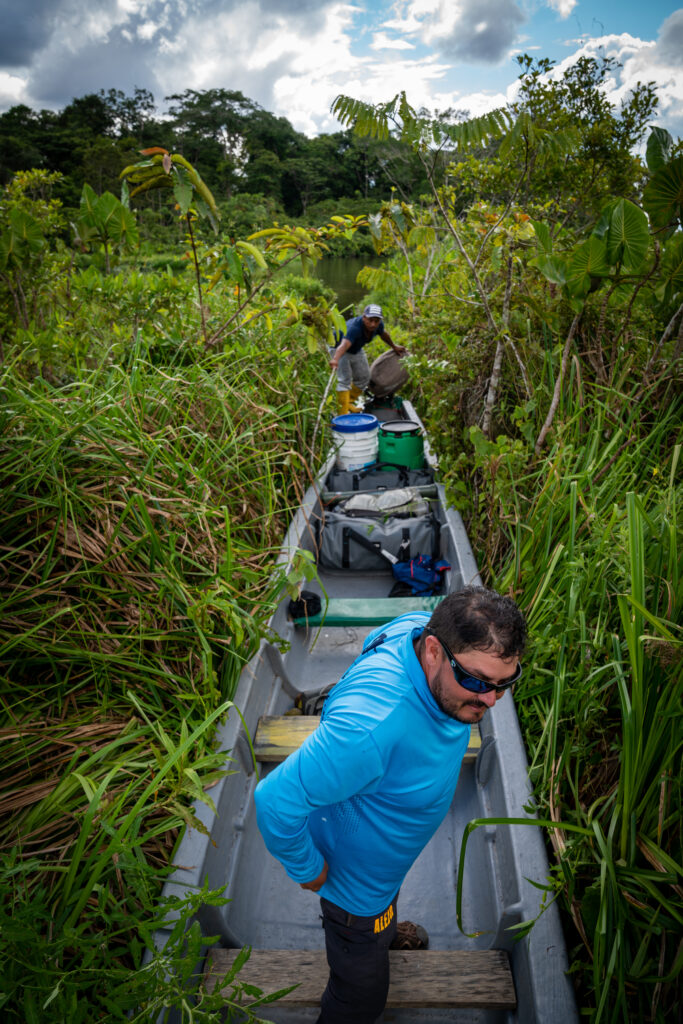
If you do book a trip, be sure to have a backup plan for traveling. Guevara recommends arriving and departing at least a day earlier than you need to, as well as investing in trip insurance and Global Rescue — you never know what’s going to happen in the jungle.
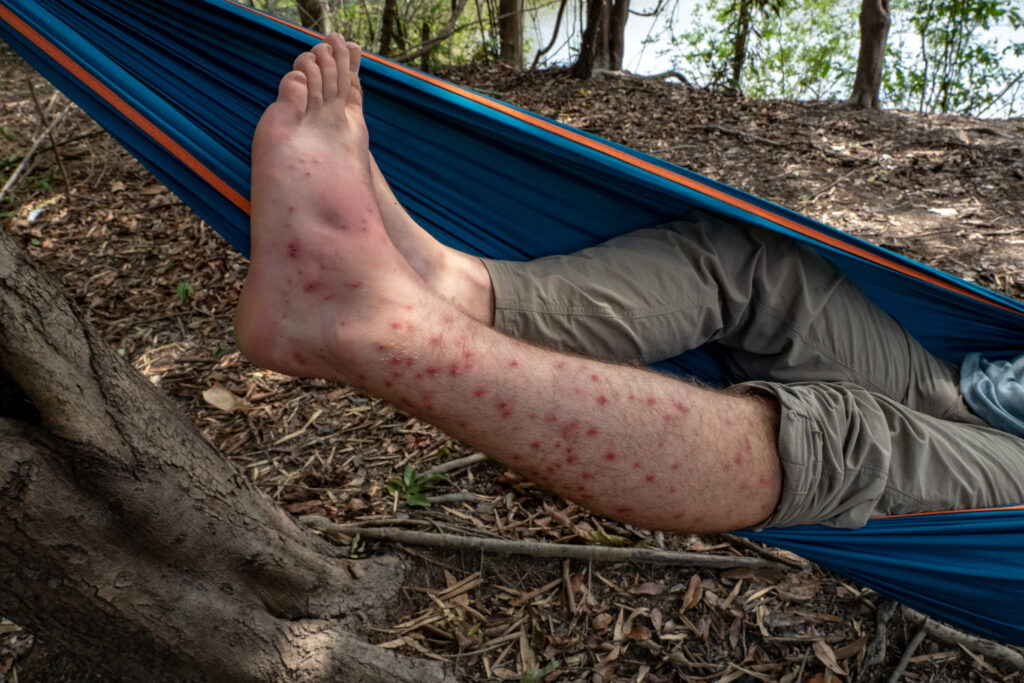
This story originally appeared in the March/April edition of SAFARI Magazine.

